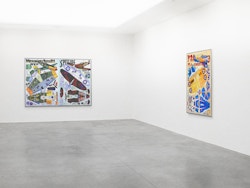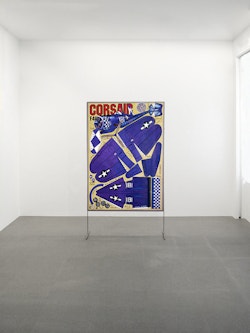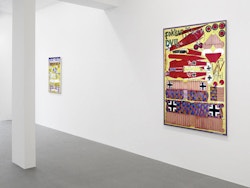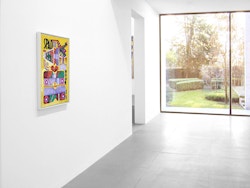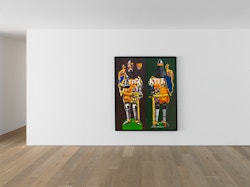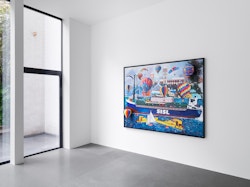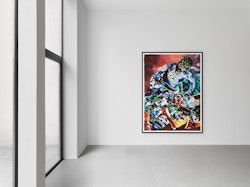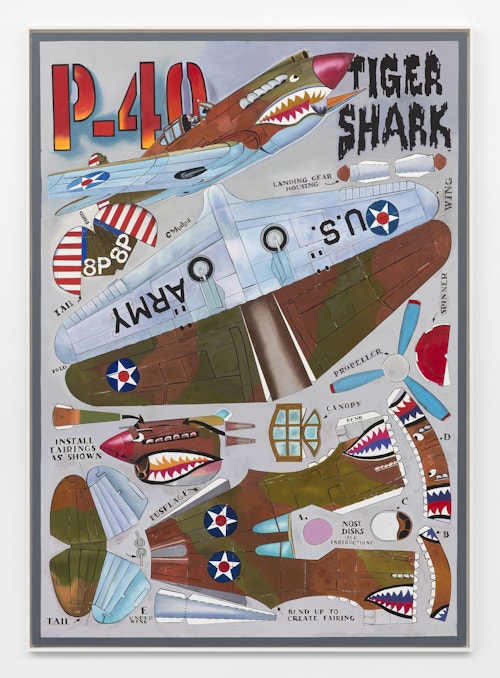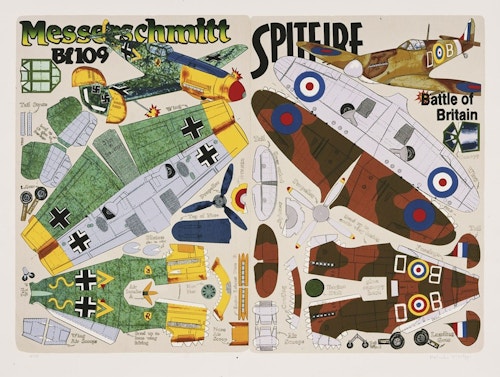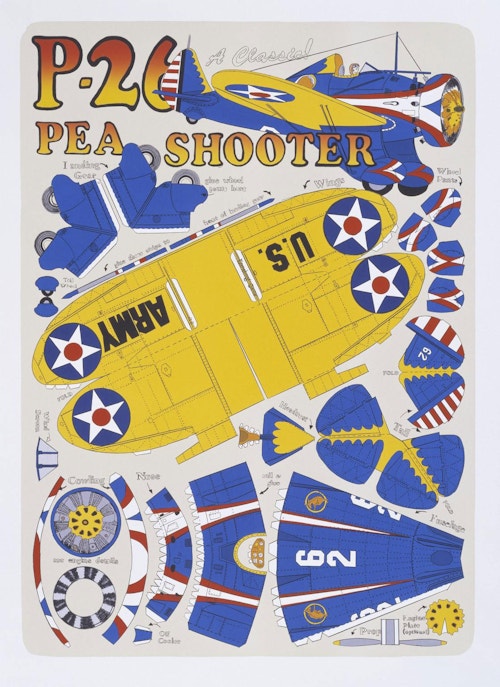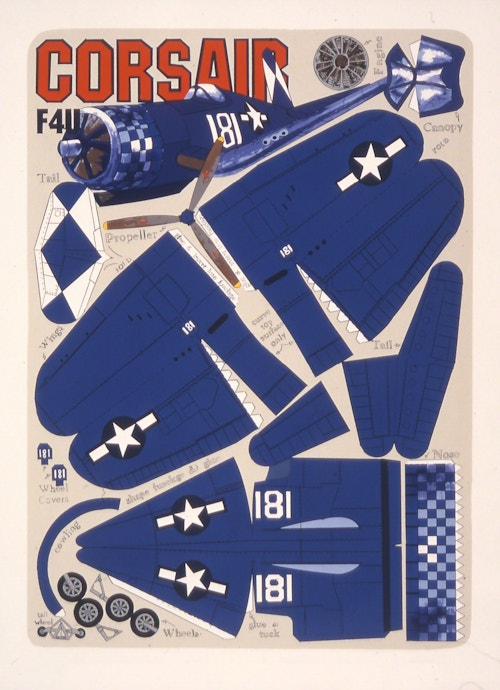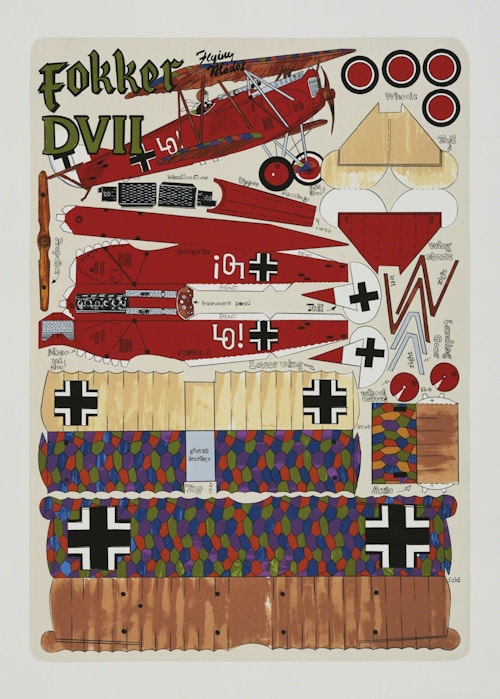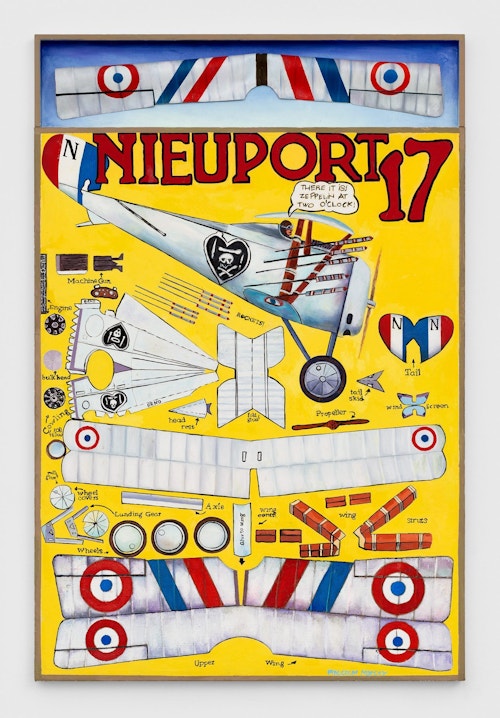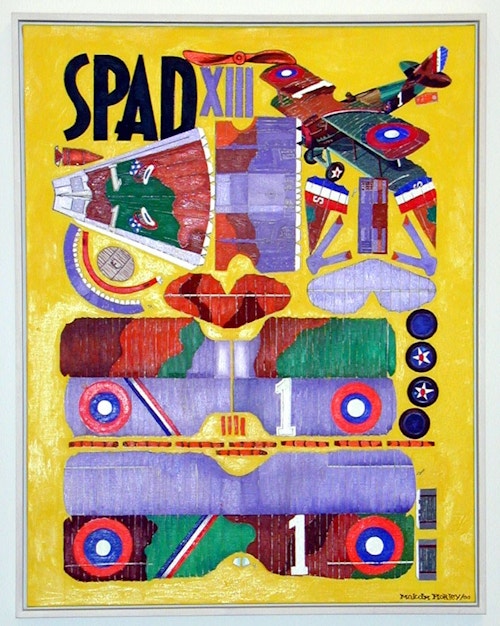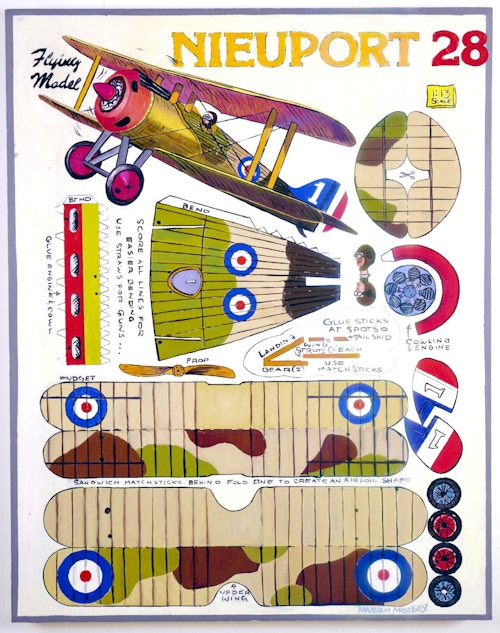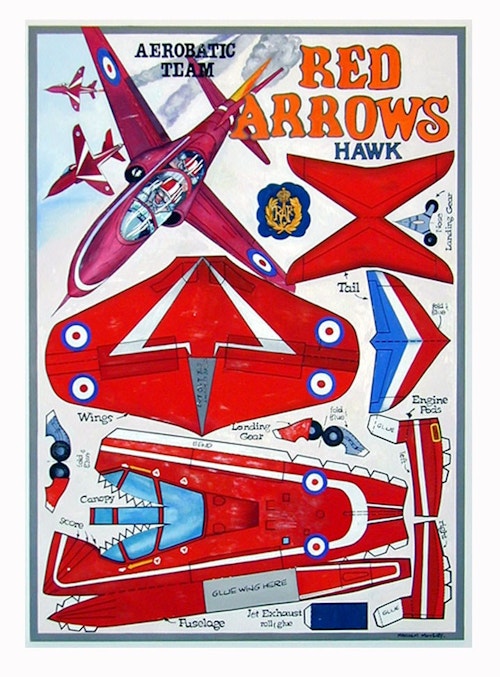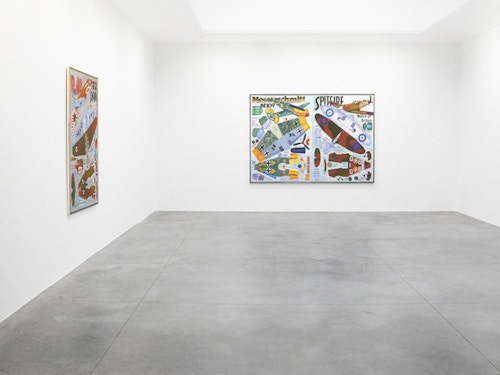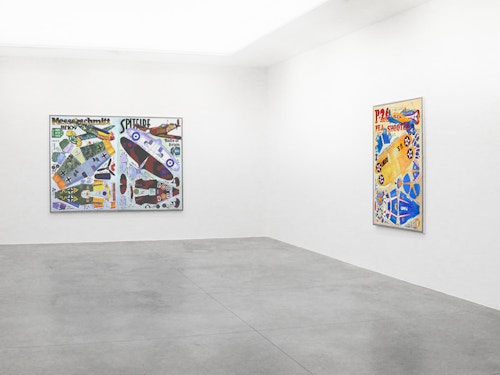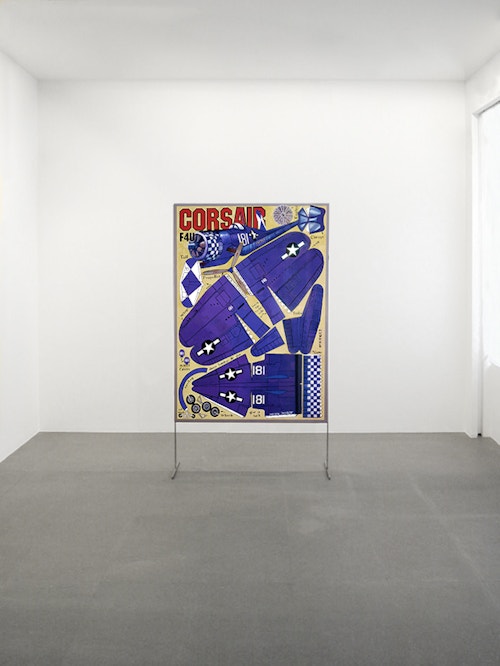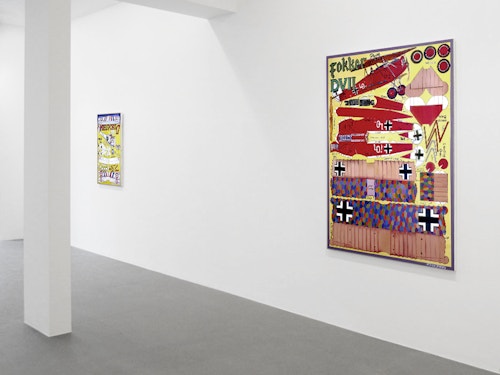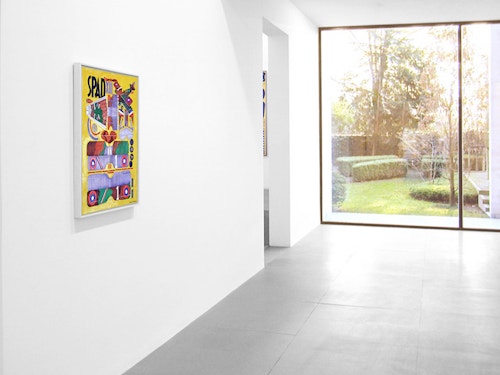
Malcolm Morley Picture Planes
The painter Malcolm Morley (° London, 1931) is not very well know in this country. Yet, he possesses an impressive curriculum and is widely acknowledged to be one of the great painters of our times.
Malcolm Morley is making individualistic work that is very hard to classify. His seemingly innocent paintings of boats, airplanes, beach scenes, landscapes,… are formally quite complex but hide at the same time an autobiographic, emotional content. Each work is profoundly permeated with the history of painting and combined with its spectacular technique, suggests an ambiguous kind of postmodern allegory.
The artist Malcolm Morley first got known in the middle of the sixties for his super-realistic paintings of ocean-liners and was soon regarded as the initiator of the photo-realistic movement. In these paintings, he started from photographs he divided into small, square units that, after being enlarged, were painstakingly copied on canvas. Each square is painted as if it is a small, abstract painting. Rather than showing off his technical ability, Morley was concerned with recording perception, with painting what he saw. Sometimes he even turned the model and painting upside down in an effort to avoid conventional results and to disregard the traditional hierarchy between figure and background. From the beginning, this structured approach is characteristic for Morley’s usual working method: selecting commonplace subjects and render them into paint through a very diverse set of techniques and intellectual processes, thereby trying to challenge our understanding of art.
The airplanes that regularly appear in Malcolm Morley’s paintings from the nineties, provide one of the main keys for interpreting the work of Malcolm Morley. Initially, the airplanes were not only painted but existed also as three-dimensional models that were mounted on the canvas and thereby, just as their two-dimensional pendants, involved them in the field of the painted “plane”. Reflecting about this idea, the critic Klaus Kertess, described the painter as “literally and figuratively a pilot of planes – performing real and imagined representations of agression upon the plane of painting”.
The “Picture Planes” are the most recent and the first systematical series of paintings Morley has created. They represent ready-made compositions: faithful, enlarged copies of postcards the artist found in a hobbyist catalogue for model-plane enthusiasts. The painted battle planes with their highlighted famous names are used by Morley as archetypes for (the dream of) modernism in general and modern art, in particular. By using visual details, style elements, lettering, he constantly refers in a refined way to the work of his predecessors Malevich, Kandinsky, Klee, Matisse, Twombly, Johns, Lichtenstein, Kelly, Warhol,… As opposed to the previous airplanes, the models in the new paintings are not assembled but lay flat and open, waiting for the benevolent hand of the hobbyist. In this sense, they not only recall suggestive dadaïst machines but also bring back under discussion the modernist rhetoric on the painting as a “flat plane”.

“Picture Planes” is the first exhibition of Malcolm Morley in Belgium. At this moment, he is also preparing an important retrospective at the Hayward Gallery in London that will open in March 2001.
Tankerton Bay
Besides the “Picture Planes”, Malcolm Morley is showing on the first floor of the gallery a set of four hologrammes. This project was commissioned and produced by “C-Project”, an organization that has already realized similar projects with Richard Artschwager, John Baldessari, Louise Bourgeois, Chuck Close, Ed Ruscha… The “Tankerton Bay” holographic plates were created using a four stage holographic process combining six models built by Malcolm Morley with laser technology and exclusive film material.
